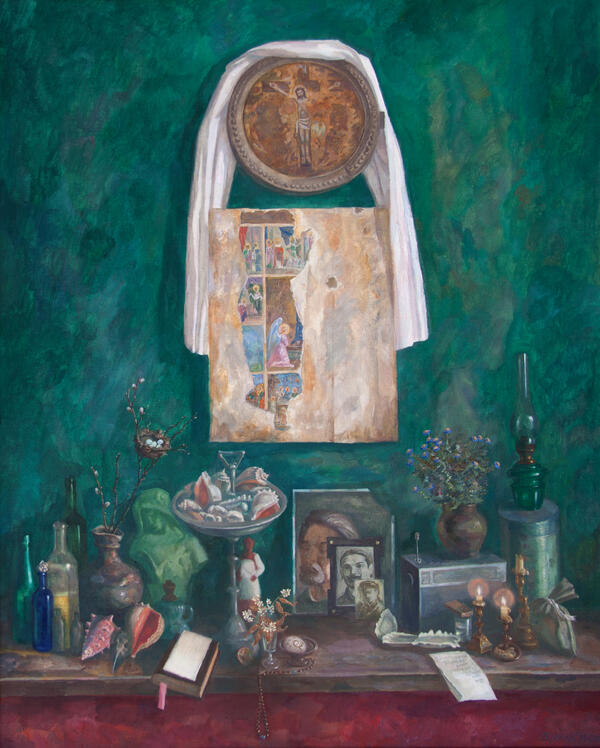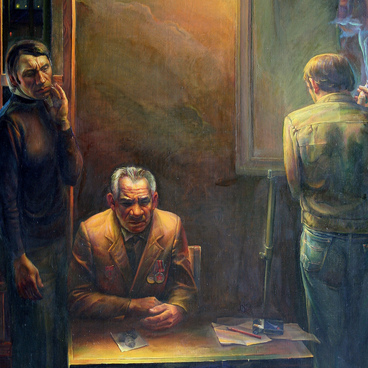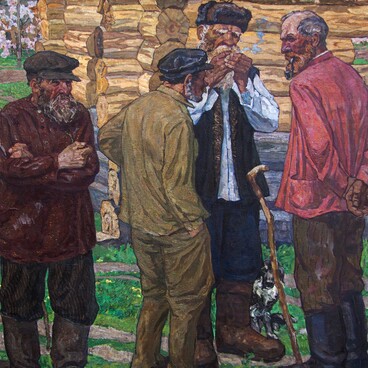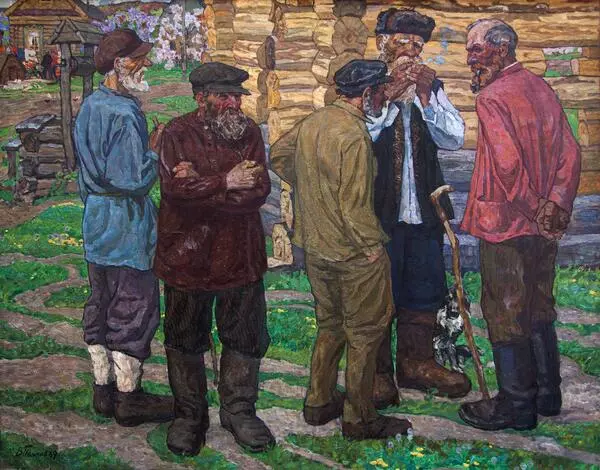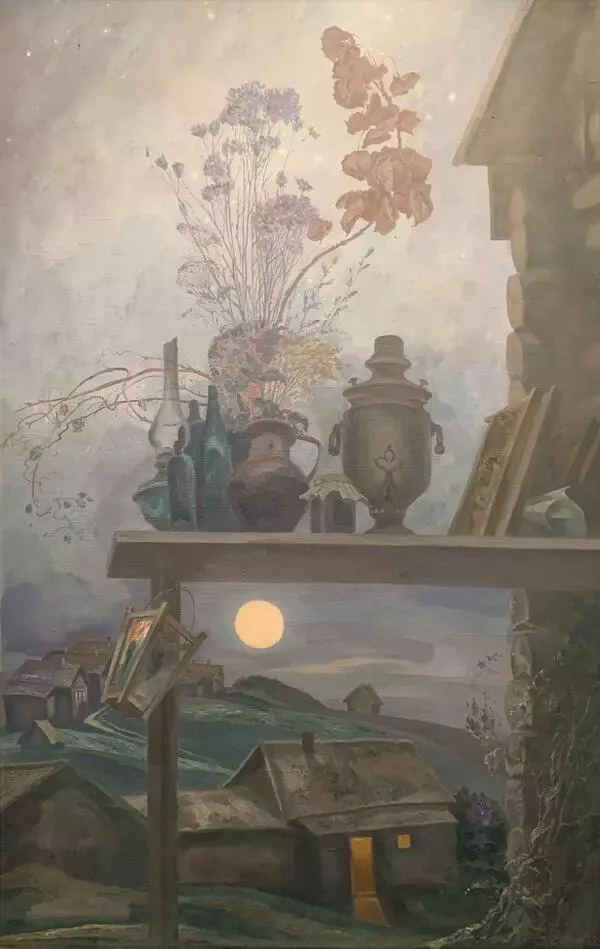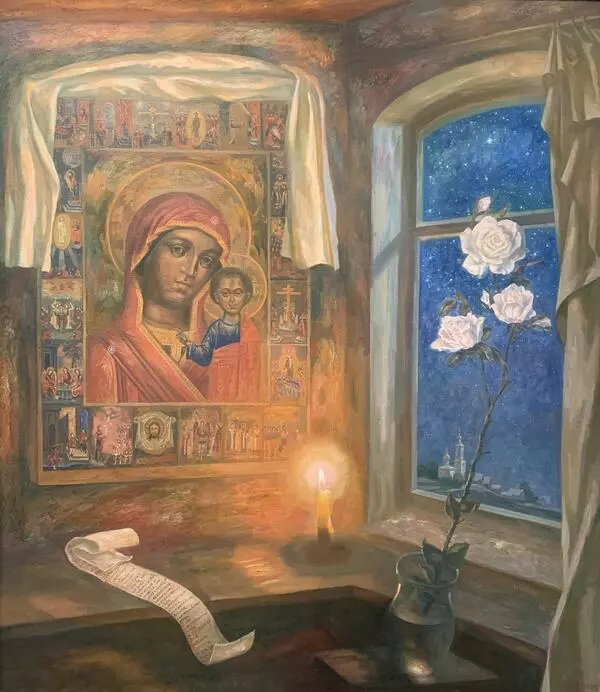The theme of memory and continuity of generations was dear to Valentin Popkov since his youth. In the early works created in the 1960s, “Anton the Beekeeper” (1967) and “Our Grandfathers” (1969) the artist reflects on the topic of preserving traditions in society. Throughout his work, the painter develops this theme, which reveals his philosophical vision and portrays the foundations of his spiritual and moral position. This is most fully represented in the picture “Memory Shelf”.
The artist uses an associative method combined with a naturalistic observation approach, which allows him not only to rely on direct observations, but also to present them according to his artistic vision, referring to associations and his personal reflections. This technique awards Valentin Popkov’s paintings with a profound semantic subtext, and enriches them with a plethora of symbolic images.
The canvas “Memory Shelf” is difficult to tie down to a particular genre. On the one hand, it is a still life, in which the state of numerous objects of our reality is revealed. On the other hand, it is an interior portrait, but without a clear characterization. Something prevents us from calling the “Memory Shelf” either a still life or an interior portrait, as its meaning is too ambiguous.
The inner time of the painting is also unclear. There is no obvious movement, no developing action, but there are overlapping layers of time. The photographs of two previous generations of the Popkov family and a self-portrait of the artist himself in the mirror emphasize the intersection of the past and present.
The composition of the painting conditionally divides the canvas into two parts: the real and unreal worlds. The shelf itself with the objects — souvenirs, a radio receiver, a kerosene lamp — belongs to the real one. An antique icon and a wooden plaque with a crucifix serve as a window into the spiritual world. They are the vertex point of the isosceles triangle, which forms the stable basis of the composition. In the canvas, the particular and visible is combined with the invisible, or imaginary.
The choice of color is also symbolic in this work. The golden light of the icon symbolizes the divine presence. The green background of the painting impresses with a wealth of accents — from thick malachite to the color of grass in May. At the same time, the emerald background includes light and dark shades of blue, which evokes two images — those the earth and the sky, united in one space.
The artist uses an associative method combined with a naturalistic observation approach, which allows him not only to rely on direct observations, but also to present them according to his artistic vision, referring to associations and his personal reflections. This technique awards Valentin Popkov’s paintings with a profound semantic subtext, and enriches them with a plethora of symbolic images.
The canvas “Memory Shelf” is difficult to tie down to a particular genre. On the one hand, it is a still life, in which the state of numerous objects of our reality is revealed. On the other hand, it is an interior portrait, but without a clear characterization. Something prevents us from calling the “Memory Shelf” either a still life or an interior portrait, as its meaning is too ambiguous.
The inner time of the painting is also unclear. There is no obvious movement, no developing action, but there are overlapping layers of time. The photographs of two previous generations of the Popkov family and a self-portrait of the artist himself in the mirror emphasize the intersection of the past and present.
The composition of the painting conditionally divides the canvas into two parts: the real and unreal worlds. The shelf itself with the objects — souvenirs, a radio receiver, a kerosene lamp — belongs to the real one. An antique icon and a wooden plaque with a crucifix serve as a window into the spiritual world. They are the vertex point of the isosceles triangle, which forms the stable basis of the composition. In the canvas, the particular and visible is combined with the invisible, or imaginary.
The choice of color is also symbolic in this work. The golden light of the icon symbolizes the divine presence. The green background of the painting impresses with a wealth of accents — from thick malachite to the color of grass in May. At the same time, the emerald background includes light and dark shades of blue, which evokes two images — those the earth and the sky, united in one space.

